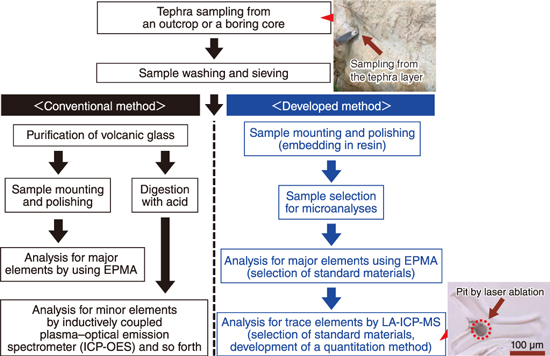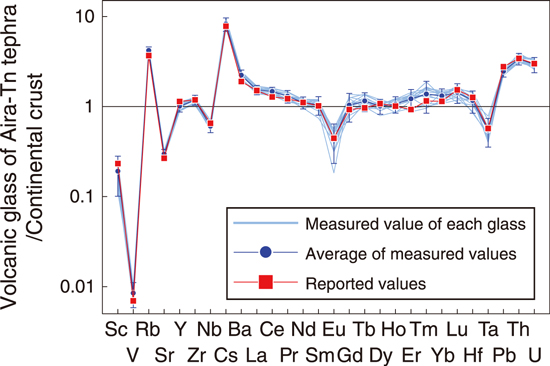
Fig.8-22 Analytical flowchart of volcanic glasses

Fig.8-23 Trace element abundances of volcanic glasses in Aira-Tn tephra measured by the method developed in this study
To assess the long-term safety for geological disposal, it is essential to predict the future stability of the geological environment based on the history of past natural phenomena. Tephra, which are ejected from volcanoes, is deposited over a wide area in a short period of time, making it a chronostratigraphic indicator. Tephrochronology is valid for revealing the history of natural phenomena. The age of a tephra-bearing layer and its surrounding strata can be determined by comparing the characterizations (shape of volcanic glasses, mineral composition, refractive index, chemical composition, etc.) of an unknown tephra with those of tephra specimens whose age is known. In particular, the chemical compositions of volcanic glasses are one of the important indicators for identifying tephra; however, in some cases, the volcanic glasses that erupted from the same source at different times have similar major element compositions. Therefore, the trace element compositions of volcanic glasses are considered an indicator for identifying tephra.
The trace element composition of volcanic glasses has been analyzed by wet analysis, in which only the volcanic glasses purified from tephra containing a large amount of minerals and then dissolved in acid for measurement. The conventional method requires complicated sample pretreatment, and the degree of the purification of the glass can drastically affect the analytical results. To overcome these problems, we developed an in situ analytical method for the trace elements in volcanic glasses; this method does not require complicated sample pretreatment.
In this study, we examined the pretreatment methods suitable for volcanic glasses and developed analytical techniques for the major and trace element compositions of volcanic glasses using an electron probe micro analyzer (EPMA) and by laser ablation–inductively coupled plasma–mass spectrometry (LA-ICP-MS), respectively (Fig.8-22). This method does not require sample dissolution, instead it only requires polishing of the surface of the sample. Sample preparation involved embedding the sample in resin because the volcanic glasses are more irregularly shaped than minerals and can easily fall out during polishing. In addition, the major element composition was analyzed more precisely and accurately by selecting the glassy standard materials, which have a matrix similar to those of volcanic glasses, for comparison with the conventional method using mineral standards. In the measurement of trace element compositions by LA-ICP-MS, although the calibration curve method with only one standard material was conventionally adapted, we established a quantitative method using three standard materials, including the material with a matrix similar to that of volcanic glasses. It was confirmed that the trace element compositions of volcanic glasses were obtained with sufficient accuracy for identifying tephra (Fig.8-23), thereby enabling the rapid analysis of the chemical compositions of volcanic glasses.
The robustness of the tephra catalog is important in tephrochronology. Since there are still only a few tephra specimens with known chemical compositions, including trace element compositions, we intend to use this method of rapid analysis, to enhance the database as a basis for tephra identification.
(Saya Kagami)